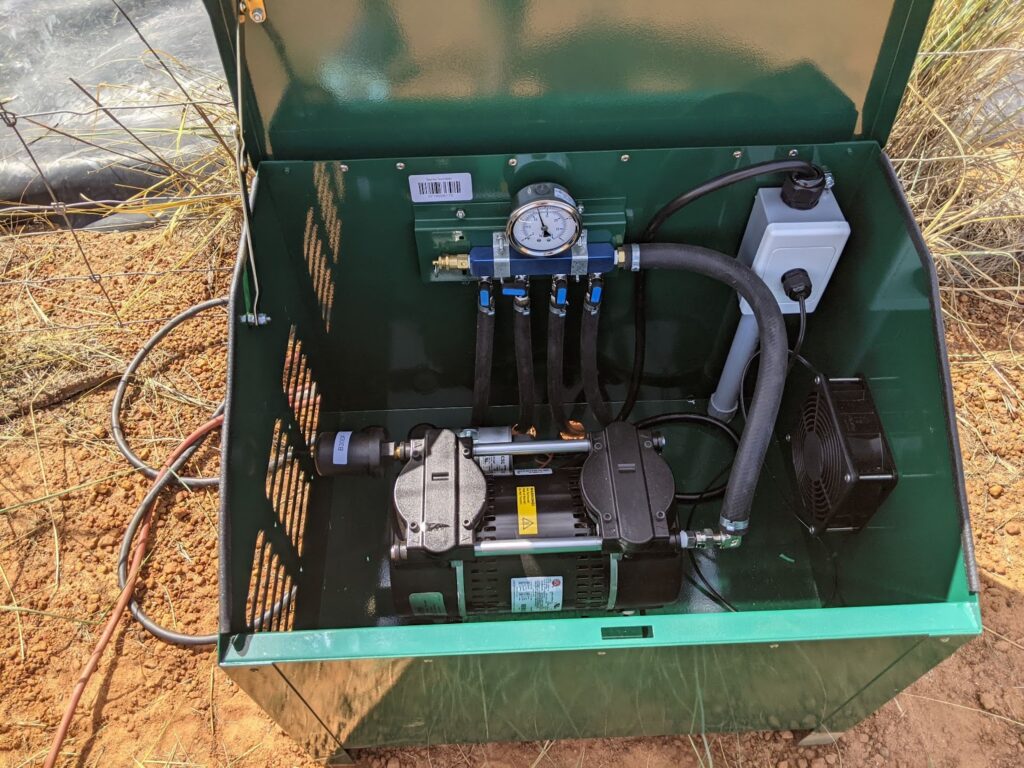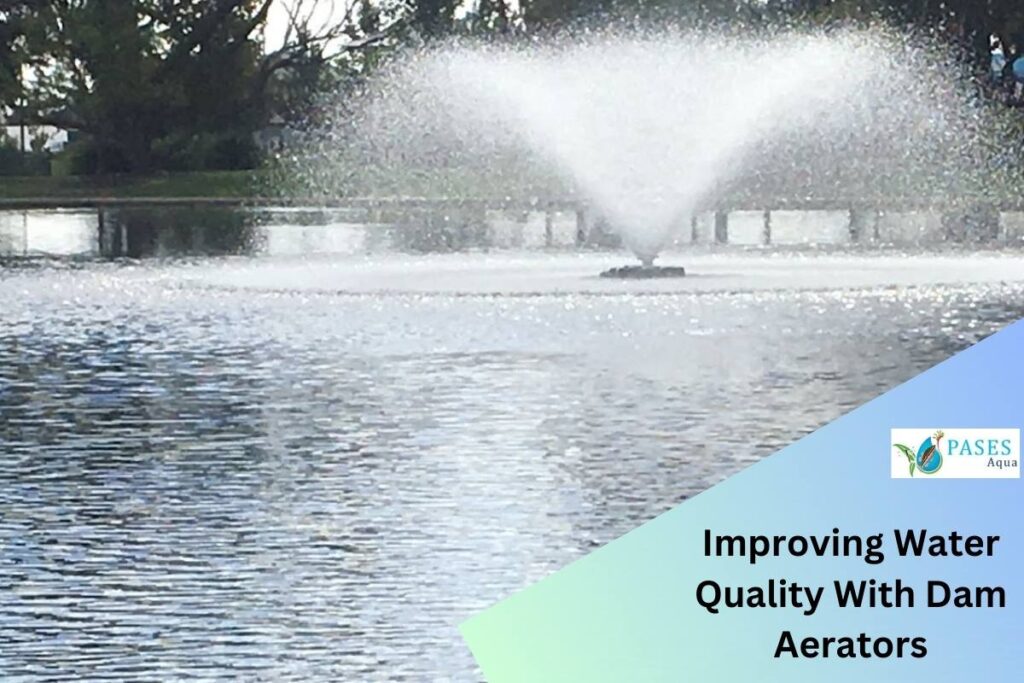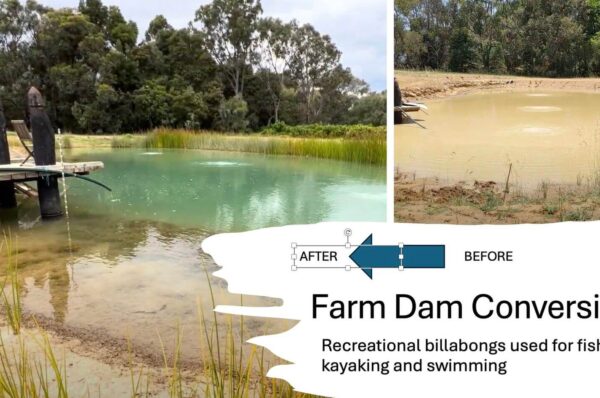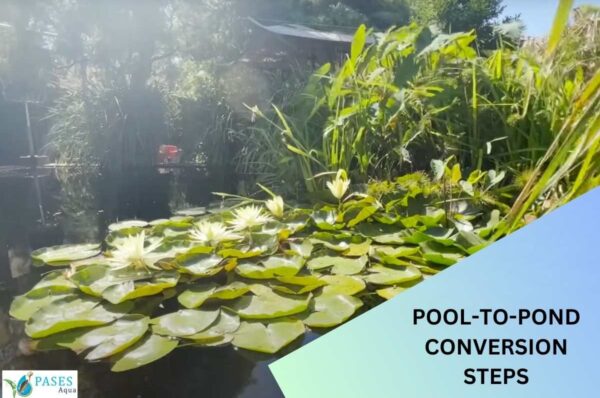Dam aeration is the key to sustaining a healthy, attractive dam ecosystem. Aeration is the heart of the system, providing increased dissolved oxygen levels for aquatic life & beneficial bacteria to flourish.
Understanding dam aerators
Dam aerators push compressed air into the surface of the lake/dam via diffusers. Some air will dissolve into the water column on its way to the surface, and the remaining air will break the water surface, creating a gas exchange.
Types of dam aerators and their applications
Rocking piston compressors
These are the most commonly sold and used dam aerators due to cost, adaptability and effectiveness.

Diaphragm aerators
Only used for small projects, these can be a “cheap’’ alternative to run small diffusers.
Windmill aerators – Solar option using forced air rather than power. These have no running costs; however, they only work when wind flow is optimal, which can cause problems.
Nanobubbles – Usually a more expensive option; however, they are very effective at releasing large amounts of oxygen into the water column due to the micro size of the bubbles and the volume of bubbles they provide. Often used in aquaculture.
Fountains
Usually used for aesthetics, however, it works better in shallow systems and provides large amounts of aeration.

The Role of Dam Aerators in Water Quality Management
Water quality indicators
Water testing: Water testing includes DO, Salinity, Iron, pH, Ammonia, Nitrite, Nitrate, Phosphate, and TDS.
Smell: Bad smells can be a sign of poor health. No smell should be present in healthy systems.
Algae: Some algae are healthy; however, excess algae such as blue/green algae is a sign of poor health.
Fish health: Fish are an obvious indication of water health; fish deaths, gasping, and fish disease can indicate poor water quality.
Clarity: Water clarity does not necessarily mean poor water quality; clear water is a good sign that the system is healthy.
Invertebrates: Signs of diverse insect life, are a great indicator of good water quality.
Plant life. Healthy-looking plants can be a good indicator of water quality.
Animal life. The presence of Reptiles, amphibians, and birds can all be good signs of water quality.
How dam aerators affect these indicators
Oxygen will create suitable levels for all animal life to survive. Increased dissolved oxygen levels will increase beneficial (good) bacteria growth, which will help control algae. Increased oxygen levels also increase safety for fish & other wildlife when treated with algaecides.
Oxygen Levels and Aquatic Life
The importance of dissolved oxygen for aquatic ecosystems.
Oxygen is essential for the survival of fish and all other aquatic organisms. Including beneficial bacteria, the higher the dissolved oxygen, the higher the beneficial bacteria levels can grow. Oxygen can also help remove iron and increase pH levels, which are more suitable for most aquatic species. Increasing beneficial bacteria and removing dead spots can also reduce algae growth.
The impact of dam aerators on maintaining adequate oxygen levels.
Dam aerators are very effective in increasing oxygen levels to a healthy level. We recommend running these 24/7 which they are designed to do.
Algae Control through Aeration
The relationship between water stagnation, temperature, and algae growth
Stagnant water will lead to an increase in water temperature and trapped nutrients growing in excess. Providing the perfect conditions for algae to thrive.
Strategies for using dam aerators to manage algae blooms.
Dam aerators will instantly help with algae blooms and are best installed first before doing a targeted algae treatment and adding bacteria products.
Supporting Fish Health with Dam Aerators
The direct benefits of aerators on fish habitats.
Increased dissolved oxygen will allow for larger stocking densities of live fish.
Enhancing fish productivity and biodiversity in dam ecosystems.
Increased oxygen levels can promote faster fish growth, reduce chances of disease and increase chances of breeding due to fish being healthier.
Best Practices for Dam Aerator Installation and Maintenance
Installation tips for optimal performance.
Our team offers the installation of any aeration system.
Here are some tips for doing it yourself.
- Use a boat or kayak to drop the diffusers in the correct location, usually at the deepest location.
- Before dropping the diffusers, ensure a buoy is tied to them, allowing you to remove or move them to avoid pulling along the bottom of the dam by the hosing. This can also help find the diffusers if the air is shut off. Or if the hose comes loose.
- Spread the diffusers out as effectively as possible and towards the deepest positions of the dam, ensuring you have the correct amount of weighted airline.
Maintenance for these compressors is very basic. Air filters are recommended to be replaced yearly or every 6 months in dusty environments. Compressors should be connected to their own RCD.
Successful Implementation of Dam Aerators
Below are the guidelines for selecting the right aerator for a specific dam.
Water depth – For shallow water (1m or under) Consider lake fountain aeration instead.
Research has shown lake bed aeration or subsurface diffusers are less effective in shallow waters. Venuris are an option here. However, compressors can still work.
Surface area
Under 50sqm – Consider diaphragm pumps such as Pond One – 02 PLUS 12000 Pond Air Pump.
For ¼ acre or under – 1/4hp kits.
For ½ acre or under – 1/2hp kits.
For ¾ acre or under – 3/4hp kits.
Over 1 acre may need more than one unit.
*These are only guidelines and can be altered depending on the customer’s needs. Fish stocking density and water quality also largely influence this.
Weatherproof, lockable cabinets – All compressors offer an additional lockable cabinet with hardwired fans and vents. Decide whether security is an issue and whether the compressor will have a suitable shed for housing as they need to be installed out of the elements.
Solar aeration
We only recommend these if power is not an option. Solar conversion kits can be very pricey.
- Most solar aerators are the same as powered ones except with solar conversion kits, including solar panels, inverter and batteries. Other options include windmills and waterwheels.
- Benefits include savings on ongoing power costs and the ability to install systems where mains power is not accessible.
Conclusion
In conclusion, dam aeration is the start and the overall key to creating a healthy, thriving dam ecosystem. All efficient water quality plans include these and should be the priority in water management.
Enquire today for a free quote via our website.
Our team also offers installation, water testing, on-site consults and lake maintenance.





